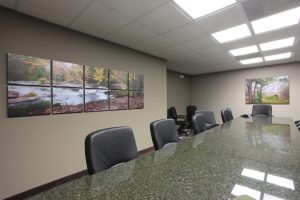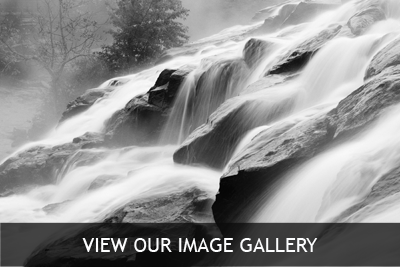The Impact Of Art In The Workplace
Originally published 5/1/16 by: Karen Higginbottom, Contributor Opinions expressed by Forbes Contributors are their own.
The impact of art in the workplace is often underestimated. Splashes of color in a painting can alter the mood of a meeting room or a piece of unusual artwork can provide a talking point in a bland corporate space. But can artwork have a direct impact on employee productivity or well-being? It seems the answer is yes.
Research by Exeter University’s School of Psychology found that employees who have control over the design and layout of their workspace are not only happier and healthier — they’re also up to 32% more productive. The research involved more than 2,000 office workers in a series of studies looking at attitudes to and productivity within working space. But it was two further studies, one at Exeter University and another in commercial offices which saw participants take on a series of tasks in a workspace that was either lean (bare and functional), enriched (decorated with plants and pictures), empowered (allowing the individual to design the area) or disempowered (where the individual’s design was redesigned by a “manager”). This study found that people working in enriched spaces (decorated with art or plants) were 17% more productive than those in lean spaces.
The notion that art in the workplace is merely decorative was dispelled in a survey of more than 800 employees working for 32 companies throughout the U.S. that have workplace art collections. The survey, a collaboration of the Business Committee for the Arts and the International Association for Professional Art Advisors drew responses from firms ranging from food distributors to law firms that house workplace collections. It found that art in the workplace helps businesses address key challenges such as reducing stress (78% agree), increasing creativity (64% agreed) and encouraging expression of opinions (77% agreed).
A smaller study at Cass Business School explored the perceptions of employees towards art in the workplace and its effect on themselves, the clients or company image. Both male (64%) and female (73%) respondents agreed that the design of their workplace has an effect on their working day. Interestingly, male respondents not only rated art (39%) as one of the most important elements of interior design of the workplace compared to other elements such as plants (39%) or a lounge area (35%), but they also give art a higher importance as an interior design element compared to female respondents. Only 17% of women named art as a crucial component of interior design.
However, the impact of art on the individual employee regarding work ethic/motivation, creativity, stress-level and general well-being seems to be greater on women than on men. While 80% of the male respondents agreed that art has a minor effect on their work ethic/motivation; all of the female respondents agreed that it has some effect on them. Specifically, 54% of women acknowledged that art has a moderate to big effect on their creativity at the office (47% of men) and 80% of the women agreed that art at the office could reduce their stress-levels (66% of the men). Furthermore, 92% of the women stated that art affects their general well-being, compared to 71% of the men.
Rise Art supplies art to many firms in the City of London. One of those firms is law firm JAGShaw Baker who chose quirky, eclectic pieces of art which are unusual for a sector known for its conservatism. “When it came to fitting out the office, I wanted something that was fun, open and didn’t look like a conservative law firm,” explains partner, Tina Baker at the law firm. “We wanted to pick artwork that was really fun. Our clients really appreciate the art we have in our conference rooms. In the meeting room, we have maps from New York, San Francisco and Berlin by Ursula Hitz.” Baker believes that art is very important to any environment, whether it’s home, office or public space–you feel very different in a space that is blank as opposed to being in a place that has a lot of art or color. We used the artwork to add splashes of color.”
For a pdf version click here: Photos for Healing Newsletter #129- Mar. ’19


